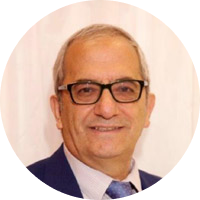
Wrinkle treatment
Wrinkles, deep furrows, excessively thin lips, unevenness or sags in the face and neck area can be annoying. Artificial preparations are reported to be used with limited and short-term results. Fat injection is recommended if a more lasting result is desired for the treatment of blemishes and furrows on the face and neck. Fat injection to the face can also be used as an additional procedure for facelifts, for example.
Nanofat transplantation not only builds up volume in the face with the patient's own fat, which is regenerative and has a beneficial effect on the quality and appearance of the skin, but also adds stem cells that are in the nanofat after it has been separated from the tissue and fluid fat. Nanofat has a regenerative effect on the skin, i.e. on the renewal process in the skin - better elasticity, less pigmentation, thicker leather skin and fewer wrinkles. This results in younger-looking and more resilient skin.
The fat is taken from your own body through special needles. This is done under local anesthesia and sedation, and is treated in a special way before being injected with a special syringe (so-called Coleman's technique) into the desired area.
It is assumed that you have areas where you can collect grease to move it to the desired area. The amount of grease depends on the volume in the area you want to correct.
In most cases, this involves relatively small amounts of fat. It is advantageous to remove fat from an area that needs correction in the same session, for example combining liposuction of the abdomen or thighs with correction of the face and lips.
Normally, the fat integrates (grows) well in the receiving area, but it must be assumed that the body absorbs (sucks) approx. 30% of the amount of fat in the first few months (somewhat less in the face), so you fill a little more than you need (overcorrect) to compensate for this (not in the eye region). Minor irregularities may therefore occur after surgery that can be corrected within the warranty period.
During the consultation, your wishes and needs are thoroughly assessed with regard to the overall situation and the area where the fat is to be removed. If there is an indication for other procedures, this will be considered whether it should be done at the same time or at a separate surgery.
In a standard fat injection, you get small scars of about 1-2 mm, where the needles must be inserted to inject the fat.
For optimal results and to avoid complications, it is recommended that you maintain as normal a weight as possible and comply with the conditions mentioned above as far as possible. If you smoke, you must quit at least 1 week before surgery and be smoke-free for 2 weeks after surgery.
We close the wound with stitches that dissolve on their own. In principle, the operation does not provide grounds for sick leave. Physical exercise and hard physical work should wait about 4 weeks. We recommend that you tape the scars for a couple of months after the operation.
Pick-up and accommodation
You must arrange in advance for someone to pick you up at the clinic about 1 hour after the operation, as you cannot drive, take public transport or a taxi on your own. You must also have someone with you the same day and the first night.
If you live far from the clinic, we recommend that you stay overnight in Oslo, either with family/friends or at a hotel.
Hotels in the vicinity of Oslo Plastikkirurgi;
Frogner House Apartments, Bygdøy Allé 53. Website; https://frognerhouse.no (we have an agreement with Frogner House Apartments) inform about us when booking a room.
Hotel Gabels Hus in Gabelsgate 16. Website; www.nordicchoicehotels.no
Before the operation
You must be healthy on the day of the operation. If you are in any doubt about whether you have a cold or similar, please contact us. The operation is not performed if you have flu with fever, cough or other infection in the body. Before the operation, you will receive a prescription for antibiotics, painkillers if necessary and Hibiscrub solution 40 mg/ml, which you can buy at the pharmacy.
The day before surgery and on the day of the operation, wash your entire body with Hibiscrub solution in the shower. This is a disinfectant soap that should be rinsed off with water and the skin dried with a clean towel. Put on clean clothes when you leave home. Do not use perfume and lotion. All jewelry, piercings and nail polish/fake nails must be removed no later than the day before the operation and replaced 7 to 10 days after the operation.
To get the best possible result and to avoid complications, it is recommended that you have a normal weight and not an excessively high BMI. If you smoke, or use nicotine such as snuff or electronic cigarettes, you must quit at least 2 weeks before surgery and 2 weeks after surgery.
You should come to the surgery fasting. This means that you should not eat any food including fruit or drink juice with pulp or dairy products 6 hours before the operation. You can drink water, juice, juice without pulp or coffee/tea without dairy products or chew gum/drops/throat lozenges up to 4 hours before the operation. Medications that you may need to take on the day of surgery can be swallowed with 1 glass of water max. 100 ml up to 1 hour before the start of anesthesia.
It is important that you stop taking blood-thinning medication about 14 days before the operation, preferably in consultation with your GP or us. For other medications, consult the clinic before the operation. You should also avoid eating a lot of garlic and health food preparations.
You must arrange in advance with a person to pick you up at the clinic about 1 hour after the end of the operation, as you cannot drive yourself, take public transport or taxi alone.
On the day of surgery
You will be received by our staff who will prepare you for the operation before the surgeon sees you. Before the actual procedure, the surgeon will go through the procedure, draw up the plan and answer any questions you may have. Anesthesia staff will also come and greet you and answer your questions.
When the operation is about to begin, the surgical nurse will pick you up and wash the operating area while anesthesia personnel give you a sedative in your arm so you sleep under surgery. In addition, the surgeon will administer a local anesthetic in the operating area for a long-lasting analgesic effect in the operating area after the operation, which also reduces bleeding in the area.
After the operation, you will be moved to the recovery room where you will have your own bed. You will then rest for 1-2 hours and be served food and plenty of drink in the form of sandwiches, yogurt and juice (remember to inform about allergies). Painkillers may be given if necessary.
The surgeon will check on you before your return home/hotel stay and you will be cleared by anesthesia staff before you go home with an adult companion. The PVK attached to your hand will be removed before you leave. A car or taxi must be used as a means of transportation immediately after surgery, we do not recommend public transport or walking.
After the operation
All patients come for a postoperative check-up the day after surgery. We recommend that you do not travel by air for the first 48 hours after surgery. During this time, a follow-up appointment will be arranged at the clinic and you should come to the clinic the day after the surgery.
In the first few hours after the operation, you may feel a little tired and sometimes a little nauseous. It's important that you take painkillers as prescribed and as needed, and make sure you drink plenty of fluids for the first 24 hours. Some people may feel a little dizzy, so it's a good idea to take a few minutes to stand up.
The final result can only be assessed after 3-6 months. Follow-up checks are arranged with the clinic; the day after surgery, after 1-2 weeks and 3-6 months, as well as a final check after a year. You must call to arrange the check-ups yourself, or alternatively make an appointment with the clinic on the day of the operation.
Bleeding and infection are uncommon and in very few cases require reoperation and/or antibiotic treatment. Anesthetic complications, such as allergic reaction to anesthetics, are extremely rare.
Physical exercise and hard physical work should be postponed for about 4 weeks.
If correction is necessary due to complications or unsatisfactory results, this will be done free of charge within one year, provided there is a medical indication and a clear potential for improvement. This is our warranty period
Ask for guidance and advice
We can give you the best advice face to face. We will guide you to the best solution for you.

The doctor in charge is Dr. Amin Kalaaji, senior consultant dr.med, specialist in plastic surgery and head of the clinic at Oslo Plastikkirurgi, and head of the Norwegian Society for Aesthetic Plastic Surgery (NFEP) 2018-2020.
Dr. Kalaaji holds many positions and gives lectures and training around the world. This benefits all our patients as he is always up to date on the latest and most advanced treatments and surgical techniques.
Patient safety, high quality and individual treatment are always our top priorities at Oslo Plastikkirurgi.
FAQ - Frequently asked questions
Oslo Plastic Surgery answers frequently asked questions here, and we hope this provides you with good information. We want to be helpful in the process before a surgery. If you have any further questions, just write or call us.
Those who want a permanent and natural 'filler' in the face and neck area, as well as skin rejuvenating skin treatment that is permanent.
All patients must undergo a consultation before surgery. The consultation is conducted by our experienced plastic surgeon who will ask you questions about your medical status; previous or current illnesses, previous surgeries, use of medication and the like. An examination will then be carried out, and the surgeon will consider a possible surgery.
If you are suitable for surgery, you will receive information about the operation itself, precautions for the time before and after the procedure, and you will get answers to your questions.
For patients with long travel distances, we offer consultations via telephone and/or video consultation. We will then send you a health information form in advance, which must be completed and returned to us before the consultation. You also send us some photos.
If a surgery is required, the surgeon will carry out a thorough assessment the day before the planned operation.
You must be healthy on the day of the operation. If you have any doubts about whether you have a cold or similar, please contact us. The operation will not be performed if you have flu and/or fever or a cough or other infection. Before the operation, you will receive a prescription for antibiotics, painkillers and Hibiscrub solution 40 mg/ml, which you can buy at the pharmacy.
If correction is necessary due to complications or unsatisfactory results, this will be done free of charge within one year, provided there is a medical indication and a clear potential for improvement. This is our one-year guarantee agreement.
